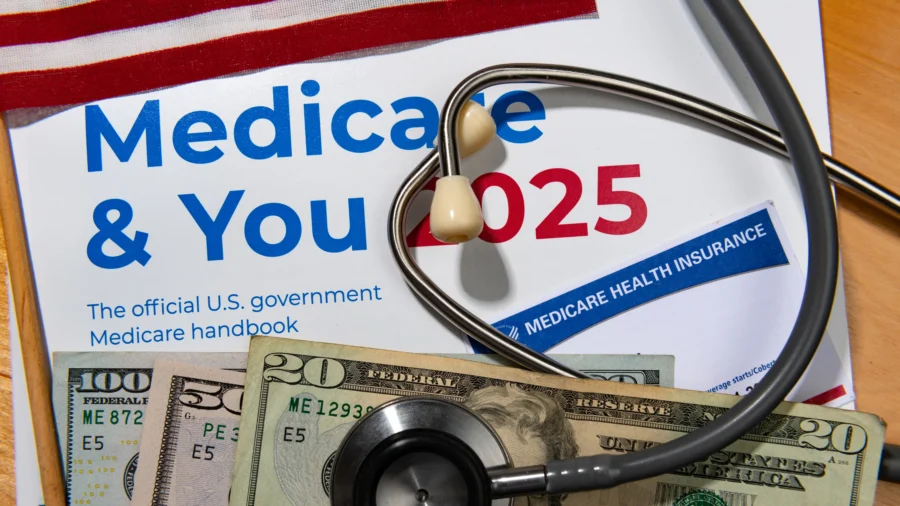American seniors will face higher healthcare costs in 2025, with Medicare Part B premiums rising by about 6 percent, outpacing both inflation and the Social Security cost-of-living adjustment (COLA).
Medicare is a U.S. federal health insurance program. Medicare sets Part B premiums, deductibles, and coinsurance rates annually, and they are deducted monthly from the Social Security checks of most participants.
In general, Medicare is available to U.S. citizens and permanent legal residents who are aged 65 or older, or are under age 65 and have certain disabilities or diseases.
Part B Premiums Increases in 2025
The standard monthly premium for Medicare Part B will see a $10.30 increase to $185.00 in 2025, up from $174.70 this year and $164.90 in 2023, according to the Centers for Medicare and Medicaid Services (CMS).
The annual deductible will also rise to $257 next year, up from $240 in 2024.
The reason for both increases is due to “projected price changes and assumed utilization increases that are consistent with historical experience,” according to CMS.
Outpacing Inflation and COLA
Medicare Part B premiums have typically risen faster than both inflation and Social Security’s annual cost-of-living adjustment (COLA).
In September, inflation was at 2.4 percent, with annual inflation rising to 3.2 percent in October.
Next year’s Social Security COLA will be 2.5 percent, adding an average of $50 per household.
However, Medicare Part B premiums have been rising faster than COLA for years, contributing to financial strain for many seniors.
From 2005 to 2024, Part B premiums increased by an average of 5.5 percent per year, while COLAs averaged just 2.6 percent—less than half that rate—in the same time period.
High-income Americans Hit Harder
Because Medicare Part B premiums are income-based, high-income beneficiaries also pay an additional fee called the Income-Related Monthly Adjustment Amount (IRMAA), affecting about 8 percent of Part B participants, according to CMS.
Married beneficiaries who lived with their spouses during the year but filed separate tax returns with a modified adjusted gross income of $106,000 or less will pay the standard Medicare Part B premium of $185.00 per month.
Those with incomes above $106,000 but below $394,000 will pay an IRMAA of $406.90 in addition to the standard $185.00, totaling $591.90 per month.
Seniors with incomes over $394,000 will pay an IRMAA of $443.90 plus the standard premium, totaling $628.90 per month.
What Will Part B Cover?
Medicare includes various parts, with Part B covering physician services, outpatient hospital care, certain home health services, durable medical equipment, and other medical and health services not covered by Part A.
Part A covers inpatient hospital stays, skilled nursing facilities, hospice, inpatient rehabilitation, and certain home health care services. According to CMS, about 99 percent of Medicare beneficiaries do not pay a Part A premium because they have at least 40 quarters of Medicare-covered employment, as determined by the Social Security Administration.

